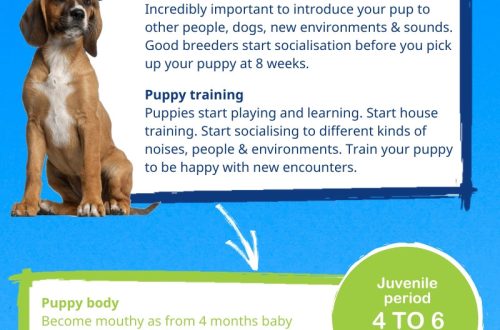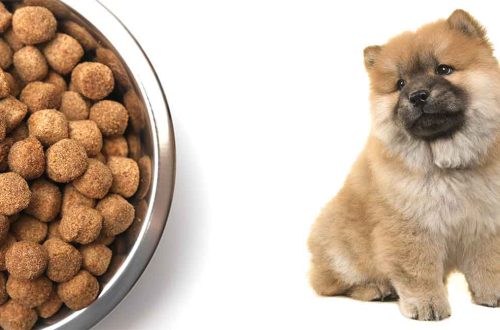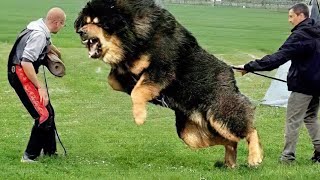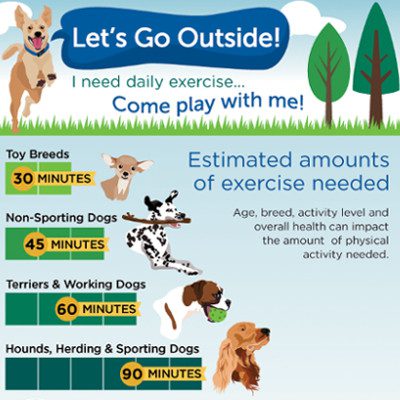
פארוואס דאַרף דיין הונט פיזיש טעטיקייט?
More and more dogs are suffering from obesity. The Association for the Prevention of Obesity in Pets estimates that 54% of dogs are overweight. Animals that gain a few extra pounds may be more prone to diseases such as arthritis than others. This is why exercise for dogs is not just a fun pastime, but a must to keep your pet in good physical condition.
Why is it important to walk your dog often? Because exercise makes her happy! Animals that regularly blow off steam are less likely to engage in destructive behavior and attention-getting antics, such as chewing, incessant barking, or biting. They also feel a closer connection with you, which strengthens your relationship as an owner and pet.
Now that you have enough motivation to get yourself and your four-legged fitness companion off the couch, let’s talk about the right types of exercise for your dog.
ינהאַלט
Different needs at different ages
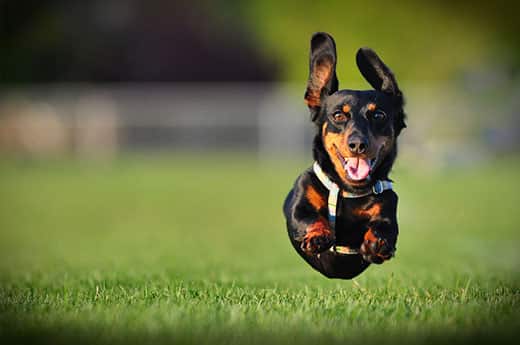
The exercise needs of a puppy are clearly different from those of an older dog. A puppy is a restless bunch of loving energy that can endlessly play fetch the ball, run around the park or play catch-up with the children all day long in the backyard. An adult dog, on the other hand, would prefer quiet walks instead of running, which she liked before. But she still needs exercise. Like humans, older animals need exercise to maintain mobility, a healthy weight, and mental alertness. That is why the pet needs to be walked. You must be aware of how physical activity and training affect an aging dog. If you think your pet is suffering from joint pain or arthritis, ask your veterinarian how to minimize discomfort during exercise and how to properly play with her. For example, swimming is one type of physical activity that will give your dog enough exercise while minimizing joint pain. Also, if you go on long walks, be sure to bring water with you to prevent dehydration, and try to walk close to places where you can stop and rest if necessary. If you notice that your dog is having a hard time, be sure to stop and let him rest.
Know your dog’s needs and limitations
The concept of healthy physical activity varies for different breeds and sizes of dogs. Dr. Marty Becker, MD, explains how the needs and abilities of different dogs can vary. The next time you take your pet for a walk, keep these features in mind.
Dogs with a short muzzle, such as Pekingese and Bulldogs, are not very adapted to physical exertion and can overheat or even die if overexerted. Hiking is often the best exercise for them. Swimming is also not very suitable for most dogs with a short muzzle.
Dogs with long backs and short legs, such as Corgis and Dachshunds, are prone to back injuries. This means that if you have one of these dogs, catching a Frisbee should not be on your list of physical activities. In other breeds, other injuries are common, so when choosing exercises, consider the characteristics of the breed and the physical characteristics of your dog.
Also, find out what kind of physical activity is right for your dog’s breed. For example, retrievers are built to fetch items and swim, so they’ll likely enjoy splashing around in the lake or playing fetch ball with you for hours. Greyhounds, on the contrary, are bred for short-term high-speed runs. They love to run, but after a short but intense workout, they will most likely want to take a nap. Sheepdogs are shepherd dogs, keep that in mind when you come up with fun exercises for your dog.
How long and thick is your dog’s coat? Dogs with thick coats, such as Akita Inu or German Shepherds, overheat faster in summer than short-haired dogs. However, dogs with short, fine coats, such as Boston Terriers or Boxers, are less adapted to cold weather.
Not sure what kind of physical activity to choose for your dog? Read the international article from Prevention Magazine for a helpful guide to the different exercise needs of dogs.
The choice of food is also important.
The food your dog eats can affect his energy levels. Hill’s foods can help an animal with health conditions that may affect its ability to exercise. Consult with your veterinarian about which food is right for your dog at different stages of life.
Also, be sure to make sure your pet maintains a healthy weight at every stage of life. Excess weight exacerbates physical problems and shortens life expectancy. If your dog needs to lose a few pounds, we recommend giving him a diet food that contains fewer calories and is designed for weight control.
Water is essential for physical activity. Make sure your dog is not dehydrated before you start exercising. Dehydration can quickly lead to overheating, causing major health problems.
Start small and build up gradually
When starting a new training program with your pet, don’t overdo it. Just like humans, dogs need time to adapt and develop stamina. Also, be sure to check with your veterinarian before starting a new exercise program. He can give you some advice on how to get started and what nutrition plan is best for your pet. Also pay attention to how she feels and how she behaves during and after class. Always consider the weather and remember that concrete and asphalt can injure or burn the animal’s paws.
Exercise for dogs has both immediate and long-term benefits. Your four-legged friend is important to you and being physically fit will help him live a long, happy and healthy life. Now take out your leash, grab some water and a trash bag, and get going!



